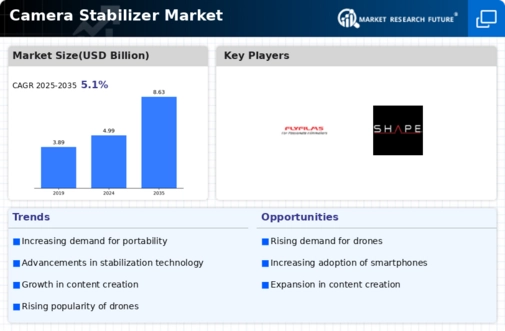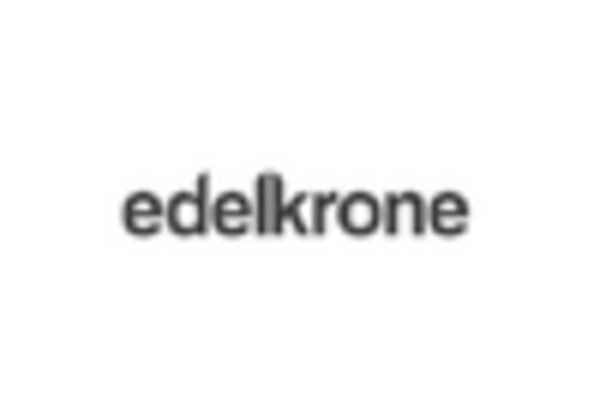Leading market players are investing heavily in the research and development in order to spread their product lines, which will help the Camera Stabilizer market grow even more. Market players are also undertaking a various strategic activities to spread their global footprint, with important market developments including the mergers and acquisitions, new product launches, higher investments, contractual agreements, and collaboration with other organizations. To spread and sustain in a more competitive and rising market climate, the Camera Stabilizer industry must provide cost-effective items.
Manufacturing locally to minimize the operational costs is one of the key business tactics used by the manufacturers in the global Camera Stabilizer industry to benefit the clients and grow the market sector. In recent years, the Camera Stabilizer industry has offered some of the most significant advantages to the filming industry.
Major players in the Camera Stabilizer market, including Flyfilms, SHAPE WLB, Tilta Inc., Letus Corporation, Gudsen Technology Co., Ltd., Rhino Camera Gear., Ningbo Eimage Studio Equipment Co., Ltd, SZ DJI Technology Co., Ltd., Glidecam Industries, Inc., Ikan Corporation, and others, are trying to increase the market demand by investing in the research and development operations.
Manfrotto is a renowned Italian brand specializing in the design and manufacture of the high-quality camera and lighting equipment for professional photographers, videographers, and content creators. Established in 1972, Manfrotto has become a global leader in the industry, recognized for its commitment to innovation, durability, and functionality. The company is particularly well-known for its extensive range of camera tripods, monopods, camera bags, and lighting support systems. Manfrotto's products are widely used in various creative fields, from photography and videography to broadcasting and cinematography.
In September 2023, Manfrotto, a leading Italian photography equipment manufacturer, acquired Gitzo, a French tripod and camera support specialist. This expands Manfrotto's portfolio into the high-end tripod and camera stabilizer market.
DJI, or Dà-Jiāng Innovations Science and Technology Co., Ltd., a Chinese technology company that has emerged as a global leader in the unmanned aerial vehicle (UAV) and drone market. DJI has played a pivotal role in revolutionizing the drone industry by consistently delivering cutting-edge innovations. The company is renowned for its consumer drones, professional-grade aerial photography platforms, and camera stabilization systems. Notably, DJI's Phantom and Mavic series of drones have gained widespread popularity for their advanced features, ease of use, and reliability.
In October 2023, DJI announced a partnership with Sony to develop new camera stabilization solutions for professional filmmakers. This collaboration leverages DJI's expertise in gimbal technology and Sony's advanced camera sensors.
















Leave a Comment